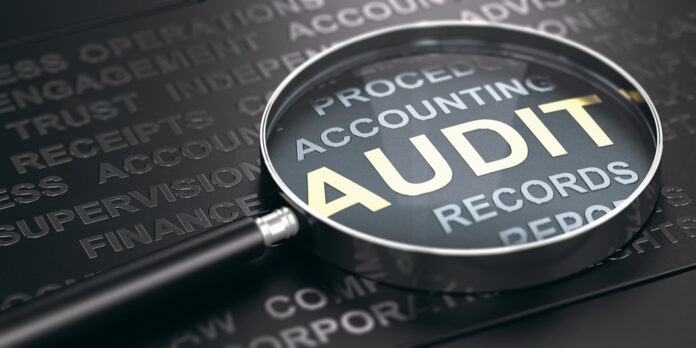Every year, thousands of small and mid-sized businesses are audited by the IRS. If your books are inaccurate, incomplete, or messy, you leave your business vulnerable to audits, penalties, and interest. However, with due diligence and support from a bookkeeping services provider, you can avoid both penalties and the unwanted stress.
Proactively auditing your books is a smart move that can help you identify and fix issues before they catch the IRS’s attention.
What Is a Bookkeeping Audit?
Bookkeeping audit, a part of the internal audit process, is a practice in which you review financial records to ensure they are accurate, complete, and compliant with the IRS regulations and accounting standards. While reviewing your books, your team:
- Checks if all income and expenses are recorded correctly
- Ensures documentation (receipts, invoices, bank statements) supports each entry
- Reconciles your accounts to identify discrepancies
- Reviews how well your current bookkeeping practices comply with IRS expectations
Why Auditing Your Books Matters?
The reason is simple. Auditing your books helps you catch mistakes before they become big problems. It keeps your financial records clean, accurate, and ready for tax time. Moreover, if your books are messy or unreliable, you’re at greater risk for IRS audits and tax penalties.
Self-auditing your books gives you a chance to:
- Identify and fix errors before the IRS catches them
- Ensure tax compliance
- Reduce the risk of penalties or interest
- Maintain credibility with lenders and investors
How to Choose the Right Audit Schedule
It depends on your business size, how many transactions you have, and any laws or regulations you tend to follow.
1. Monthly Bookkeeping Check
Do a quick check of your books every month to find mistakes early. This helps you:
- Spot unusual activity/entries in your books
- Make smarter financial decisions
- Confirm that all income and expenses are recorded correctly
- Lower the risk of fraud
2. Quarterly Financial Review
Every 3 months, do a deeper review of your finances to:
- See the big picture of your business health
- Adjust your goals or spending plans
- Stay on track with financial rules and reporting
3. Yearly Full Audit
Once a year, thoroughly review everything carefully. A full audit includes:
- Reviewing all records and reports
- Finding long-term trends in your finances
- Making sure you follow all tax and legal rules
Step-by-Step Guide to Auditing Your Bookkeeping System
1. Reconcile All Accounts Monthly
- Match bank statements, credit card statements, and reports with accounting records.
- Check for missing transactions or duplicate entries.
- Make sure all cleared/ uncleared transactions are properly recorded and categorized.
Pro tip: Seek professional help or use accounting software that come with automated reconciliation features (like QuickBooks Online or Xero).
2. Review Your General Ledger for Accuracy
The General Ledger (GL) is the foundation of your accounting. Every month, go line-by-line and:
- Look for unusual account balances (e.g., negative liabilities)
- Identify misclassified entries (e.g., loan payments posted as expenses)
- Correct journal entries where needed
3. Make Sure the Revenue Recognition Is Accurate
Revenue must be recorded in the correct period, especially if you use accrual accounting. So, cross-check your invoices with your income statements every month. Match deposits in your bank to customer payments and make sure no deposits are double-counted.
4. Review and Categorize All Expenses
Check if all expenses are digitally documented and recorded correctly. While doing so, separate business and personal expenses. This is again a monthly review task that helps spot misclassified expenses quickly.
You may also consider using IRS Publication 463 to ensure all travel, meals, and vehicle expenses are deductible.
5. Audit Payroll and Independent Contractor Payments
Payroll and contractor payments are closely scrutinized by the IRS. Any mistakes here can lead to serious penalties. To ensure compliance, every quarter, check if the:
- Payroll taxes were withheld and deposited on time?
- Forms 941, 940, W-2, and W-3 were filed correctly?
- 1099-NEC forms were issued to contractors earning $600+?
6. Check for Missing or Duplicated Transactions
Run a transaction report, every months, by date and identify gaps in transaction numbering. Look for duplicate entries as well as transactions with no supporting documents. To stay sorted, tag each transaction with a unique reference number or internal memo.
7. Evaluate Your Sales Tax Reporting Quarterly
If your business collects sales tax, check that the collected tax matches the filed returns. Also, confirm that taxable vs. non-taxable sales are correctly categorized. You can consider using a sales tax tool like Avalara, TaxJar, or Zamp to automate multi-state compliance.
8. Audit Fixed Assets and Depreciation
Assets like equipment, furniture, and vehicles must be audited annually.
- Capitalize them, if they exceed the capitalization threshold
- Depreciate them using IRS-accepted methods
- Support all assets with purchase invoices
9. Check Financial Statements
Generate and analyze your financial statements every month and look for red flags. The most important reports include Profit & Loss statement, Balance Sheet, and Cash Flow Statement.
10. Check Your Documentation and Retention Policy
Proper recordkeeping is the hallmark of audit preparedness. The IRS doesn’t just want clean numbers, it wants supporting documentation as well. Failing to produce key documents when required can lead to disallowed deductions, penalties, or worse. So maintain,
- Income and expense records for 3-7 years
- Payroll records for 4 years
- Asset purchase records for as long as the asset is in use + 3 years
Expert Tips from a CPA
To keep your books clean and audit-ready,
- Document everything — if the IRS can’t see it, it didn’t happen.
- Create a month-end close checklist to stay consistent and catch errors early.
- Schedule a quarterly internal review or outsource it to a professional service provider for expert bookkeeping support.
Find a Home-Based Business to Start-Up >>> Hundreds of Business Listings.














































